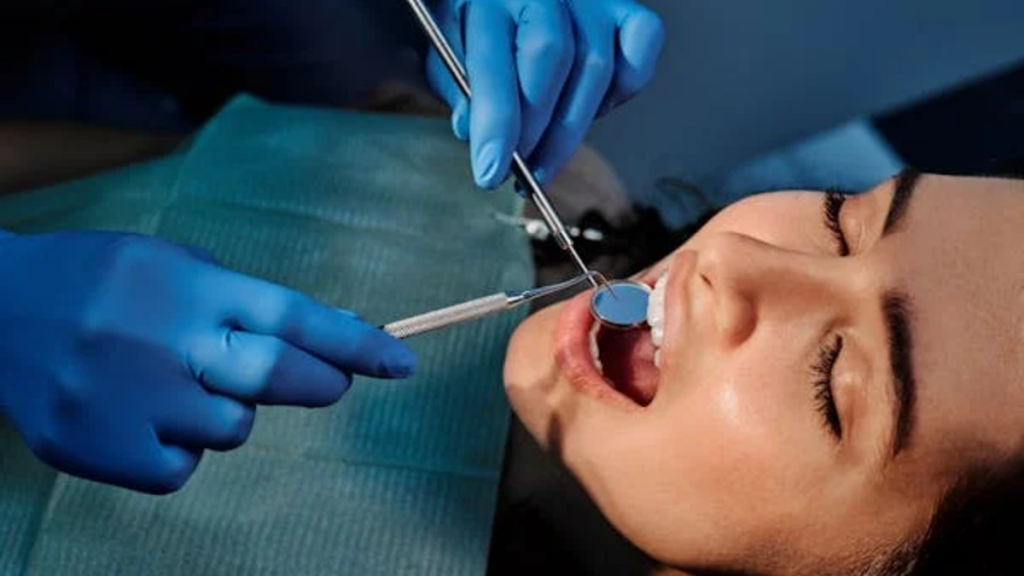We’ve all been there. And by there, we mean having to deal with a sharp, stabbing pain in your mouth that seems to appear suddenly and get worse with each passing moment. Or a tooth could have broken just as you bit into a slice of your favourite pizza.
Dental emergencies can include anything from the pain caused by an inflamed gum, a chipped tooth, or a filling that fell out. Maintaining good oral health may be the best way to avoid a dental issue, but there’s no guarantee that you won’t need the emergency dentist Mornington locals rely on.
Dental Emergencies Can be a Nightmare
There’s a fine line between what your dentist may require a dental emergency and your own assessment of the situation. For most people, this line is determined by the amount of pain or inconvenience the offending dental issue is causing. As you get older, and your teeth become weaker, the likelihood of an emergency increases.
This makes it essential to know what the most common emergencies are and also the best way to deal with them until you can get to a dentist. Our experts share the top dental emergencies to be aware of.
1. Plain Old Toothache
Some people may regard an emergency as something that’s accompanied by blood and broken teeth. However, you should never underestimate the discomfort that a simple toothache can cause. While it’s true that most toothaches can be managed with over-the-counter medications, some pain can be so severe that it will require immediate attention.
Toothache is usually caused when the innermost layer of the tooth, or dental pulp, becomes inflamed. Since the pulp is made up of sensitive blood vessels and nerves, the smallest inflammation can lead to pain shooting into the tooth.
If you’re dealing with a toothache and you can’t see or feel anything (such as a loose tooth or missing filling) that could be the direct cause, consider the following:
- Gently brush your teeth as the pain may be caused by something that’s stuck in between your teeth.
- Apply a cold compress to the outside of your cheek.
- Be careful with the type of over-the-counter medication you use as aspirin can burn the gum tissue. Opt for a painkiller that you need to drink and not put directly on the tooth.
- If the pain persists, rinse your mouth with a warm salt water solution to rinse out any potential bacteria.
- Call your dentist for an emergency appointment.
2. Abscess in Your Mouth
Another common dental emergency is an abscess in or near the tooth. If left untreated, this infection can spread to surrounding gum and teeth tissue and in severe cases, to the rest of your body. A clear sign that you have an abscess is a pimple-like swollen spot.
This may be red or yellow, indicating that there is bacteria inside. Here’s what you need to do:
- Rinse your mouth with warm water and salt solution.
- Avoid trying to pop, puncture, or open the abscess as this can spread the toxin inside to other parts of your mouth or throat.
- Make an emergency appointment with your dentist.
- Apply an ice pack to the swollen area to provide temporary relief. If possible, place an ice cube next to the abscess to reduce pain.
3. Chopped or Broken Teeth
Biting down on something too hard can result in a chipped or broken tooth, which can also hurt. If this happens, follow these few easy steps:
- Rinse your mouth with warm, salty water to eliminate any bacteria.
- Apply a piece of gauze to the area if it’s bleeding.
- Use a cold compress to the side of your face closest to the broken tooth to alleviate the pain.
- If you have a piece of tooth that broke, rinse it off and place it safely in a piece of tissue. There’s no guarantee, but your dentist may require that piece to repair your tooth.
4. Knocked-Out Tooth
It’s easier than you think to accidentally knock a tooth loose or completely out. All it takes is a hard fall, an accident, or a sports injury. If this happens, here’s what you need to do:
- Pick the broken tooth up by the crown and rinse it off with milk if it’s dirty. Avoid touching the root. (Here you want to opt for milk rather than salty water as this will be too strong for the exposed enamel)
- If possible, gently put the tooth back in its original place, preferably within the hour.
- When placing the tooth back isn’t possible (too much pain, excessive bleeding or other gum damage) rather place the tooth in a glass of milk.
- Contact your emergency dentist immediately as they will need to help you urgently to avoid long-term damage.
Final Thoughts
There’s no reason to endure a painful tooth, gum, or mouth abscess that’s causing you extreme pain. Follow our suggested tips to help you find relief until a dentist can see you. It’s essential to explain the severity of the dental emergency so that your dentist can recommend further steps until you can be seen. This will not only provide relief but will also prevent long-term damage to the rest of your teeth and gums.




